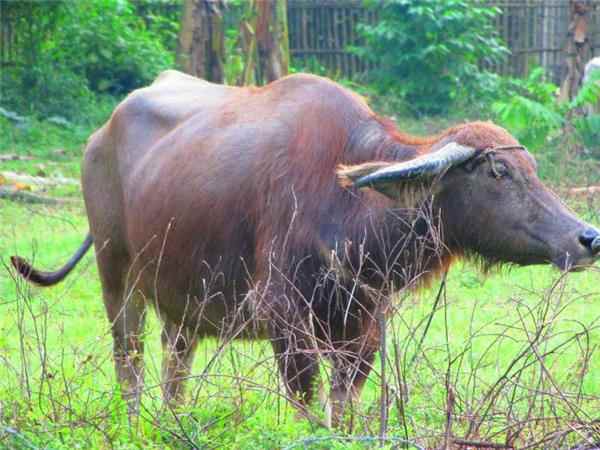Carabao milk, a staple in many Filipino households, is a product of the indigenous carabao, a symbol of hard work and resilience in Filipino agriculture. As a local of Los Baños, where the Dairy Training and Research Institute (DTRI) is located, I have grown up with carabao milk and its delicious by-products like kesong puti (white cheese) and pastillas de leche (milk candy) sold along the streets. These are so much a part of our culture that I can still vividly recall how, as a child, carabao’s milk would be sold in long-necked glass bottles sealed with banana leaves. Even the white cheese would be carefully wrapped in banana leaves to preserve its freshness.

However, as times change, so does the packaging and presentation of these traditional products. The days of banana leaves are nearly gone, replaced by modern, sleek packaging found in stores and malls. Today, chilled carabao milk is sold in sealed bottles, while pastillas de leche and kesong puti are beautifully packaged and displayed with flair. The nostalgic charm of the past may have faded, but the rich tradition of these dairy products remains strong.
The Carabao: More Than Just a Farm Animal
The carabao, a key livestock in the Philippines, holds significant importance in the farming community. Historically, it has been the farmer’s most reliable partner, pulling plows and helping with fieldwork. However, as mechanized farming tools like tractors have become more prevalent, the carabao’s role as a work animal has declined. Despite this, in rural areas where small-scale farmers still dominate, the carabao remains an essential farm companion—especially for those who cannot afford expensive modern machinery.
But the carabao is not just a beast of burden. Its milk and meat are integral to the Filipino diet and economy. Carabeef, the meat from carabaos, is commonly used in processed products like sausages, luncheon meat, and even canned corned beef. It’s particularly popular for its high water retention, making it ideal for products that retain their shape during cooking. Additionally, carabeef is a more affordable alternative to beef, which makes it an attractive option for food manufacturers.
Carabao Milk: A Nutritional Powerhouse
Carabao milk is often hailed as the “most complete food” because of its rich composition of protein, fat, lactose, vitamins, and minerals. According to the Philippine Carabao Center (PCC), this milk is far creamier and richer than that of cows or goats, making it a valuable source of energy. It contains essential vitamins like riboflavin (Vitamin B2), which is necessary for growth and helps prevent conditions like mouth sores and dizziness. Vitamin A in carabao milk contributes to better eyesight, while vitamins D, calcium, and phosphorus promote strong bones and teeth.
However, carabao milk, like all dairy products, can be susceptible to bacterial contamination once it’s exposed to the environment after milking. The high nutritional value of the milk makes it an ideal medium for bacteria to thrive, which is why proper handling and storage are crucial.
Preserving Freshness and Ensuring Safety
To keep carabao milk fresh, the Philippine Carabao Center suggests three essential steps:
- Immediate cooling: After milking, fresh carabao milk should be placed in a refrigerator or ice box right away.
- Pasteurization: To ensure safety, the milk should be pasteurized. This process involves heating the milk for 30 minutes at 63°C or 15 seconds at 72°C to eliminate harmful microbes.
- Proper storage: If the milk isn’t consumed immediately, it should be stored in a cool place to prevent bacteria growth, even if pasteurization has been carried out.
For those looking to avoid waste, turning carabao milk into other products is an excellent solution. These products range from the ever-popular kesong puti and pastillas de leche to ice cream, cheese spreads, mozzarella, and even condensed milk.
A Delicious Filipino Tradition: Pastillas de Leche
One of the standout delicacies made from carabao milk is pastillas de leche—a sweet, creamy treat beloved by Filipinos. This milk candy, with its simple ingredients of milk and sugar, is a favorite dessert. The best pastillas are made with the finest quality carabao milk and sugar, and while Bulacan is famous for its pastillas production, Nueva Ecija is gaining recognition for making pastillas from pure carabao milk.
Another iconic product is kesong puti, the Filipino version of cottage cheese. This salty, soft cheese, made from fresh carabao milk, is a staple in Filipino cuisine and is typically served with bread or as part of various dishes. Even more innovative is the Filipino-style carabao mozzarella, which, while visually similar to its Italian counterpart, has a unique texture and slightly grayish hue.
Conclusion
Carabao milk and its by-products are much more than just food products; they are a cultural heritage that continues to thrive in the modern world. From its historical roots in agriculture to its continued significance in the Filipino diet, carabao milk offers a unique and flavorful connection to the past. Despite the evolving packaging and modern production methods, the essence of these products remains the same—an enduring symbol of Filipino craftsmanship and tradition.
